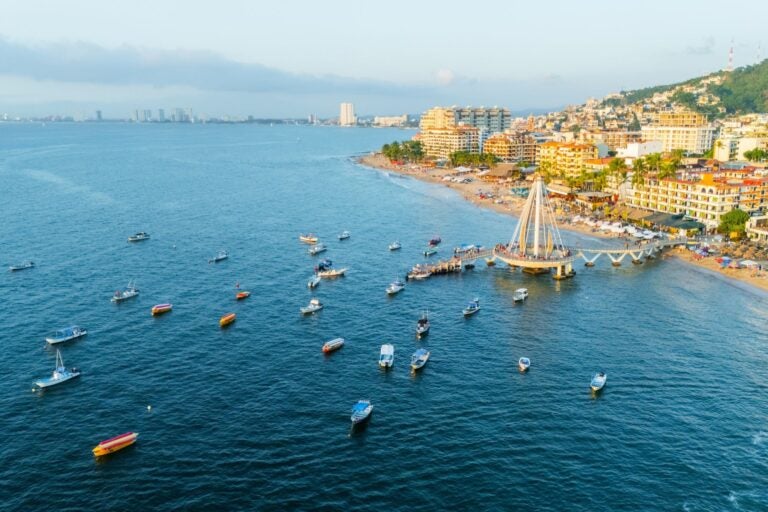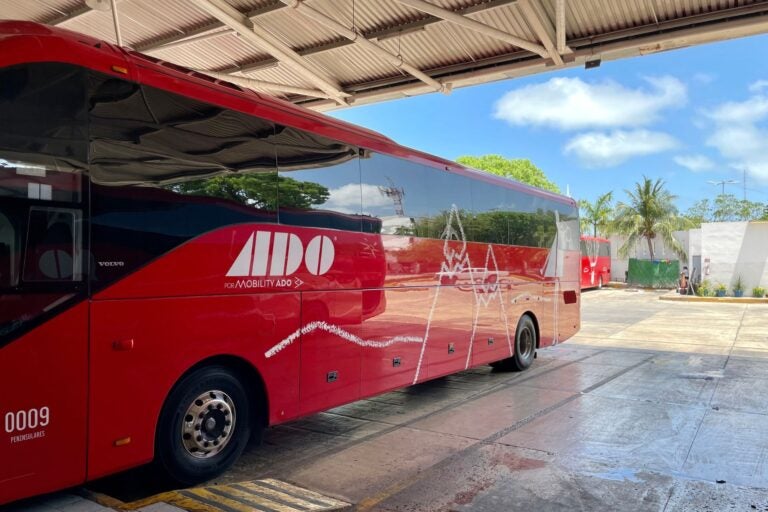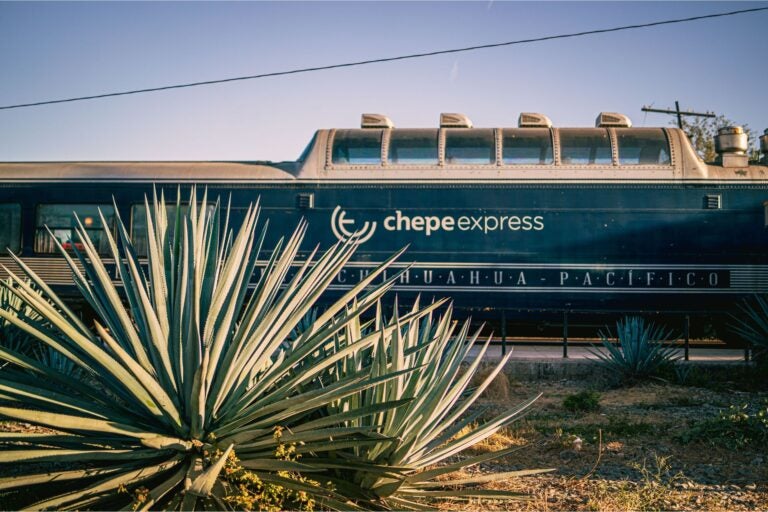Transportation in Mexico: How to get around like a local
Get around Mexico like a pro. Learn how transport in Mexico works, including flights, cars, boats, buses, and trains.
Navigating Mexico’s local airlines, highways, and public transport systems is an adventure. But, by understanding the different types of transportation in Mexico, you can unlock the country in a way that fits your travel itinerary.
This guide will help you discover how to get around in Mexico efficiently, covering all the important modes of transport: Plane, car, bus, boat, and train. Plus, we show you how to stay connected as you navigate across Mexico with an unlimited data travel eSIM from Holafly.
Getting around Mexico by plane

For covering more ground across Mexico, especially between its major cities and popular tourist destinations, domestic flights are the most efficient option. Beyond well-known carriers like Aeromexico, Volaris, and VivaAerobus, smaller regional airlines such as Calafia Airlines serve Baja California Sur, while TAR Aerolíneas provides connections to central and northern Mexican cities.
Travel by air is ideal if you have limited time but still want to see different parts of Mexico. For example, flying from Mexico City to one of the best beaches in Mexico, Cancun, takes around 2 to 2.5 hours and can cost anywhere from $30 – $300 depending how far in advance you book. A flight from Mexico City to Puerto Vallarta on the Pacific Coast is usually a 1.5 to 2-hour trip, with prices ranging from $20 – $50. As these spots are major hubs for tourism, booking flights in advance is crucial to securing the best fares and ensuring availability.
Getting around Mexico by car

Renting a car offers freedom for exploring Mexico, so you can venture beyond the tourist hubs. While major cities and their surrounding highways have decent road infrastructure, stick to toll roads (cuota roads) as they are typically better maintained and more secure, and it’s generally advisable to drive during daylight hours. Always be attentive to road signs and local driving customs, and ensure your rental car insurance is comprehensive for added peace of mind. Car rental agencies are available at all major airports and cities, and cost around $40 – $60, varying by city and car type. You can also easily get up to speed on how to rent a car in Mexico.
When heading out by car on one of the best day trips from Mexico City, the pyramids of Teotihuacan, take toll roads like Federal Highway 85D (Carretera México-Pirámides). These roads offer direct routes, taking less than an hour to reach this destination from the capital. The open road provides unique access, and with the right Mexico travel guide, you can find hidden gems and authentic Mexican street food.
Alternatively, ride-sharing services like Uber can be a less stressful option than driving, with an average Uber fare for a short trip within Mexico City around $4, while a trip to Teotihuacan could be around $25. Make sure you have an eSIM or SIM card for Mexico to book your ride!
Getting around Mexico by boat

Mexico’s coastlines are dotted with picturesque islands and port towns, and boat transportation is necessary to access these remote areas. Whether it’s the Caribbean’s turquoise waters or the Pacific Coast’s shores, ferries and water taxis are common.
- Near Puerto Vallarta, home to one of the most popular festivals in Mexico, Mardi Gras, you can board a water taxi from Marina Vallarta or Los Muertos Pier to the island of Yelapa, with a travel time of 6-8 hours including stops. A round trip ticket costs around $25 – $30 from Los Muertos Pier, or around $6 one-way from Boca de Tomatlan.
- For the Marietas Islands and famous “Hidden Beach,” boat services from Puerto Vallarta also take 1 to 1.5 hours each way, with tour prices around $75 – $150.
- In the Yucatán, regular ferries from Playa del Carmen transport passengers to Cozumel in 45 minutes, and cost around $15 – $20, while shorter trips to Isla Mujeres from Puerto Juárez take around 15-20 minutes and costs around $10 – $15 USD.
Confirming schedules and purchasing tickets in advance is always advised for these increasingly popular island destinations.
Getting around Mexico by bus

Buses are arguably the most common form of intercity transportation in Mexico and offer an extensive, affordable, and comfortable way to travel the country. Mexico’s bus system is highly developed, from more modest buses to luxurious, first-class coaches with reclining seats, air conditioning, and entertainment systems.
Long distance bus companies like ADO, ETN, and Primera Plus are increasingly popular and operate throughout the country, connecting nearly every city. As far as costs, a trip from Mexico City to the popular Guadalajara or San Miguel de Allende with ETN or Primera Plus, can range from $65 – $85. Most have WiFi available, so you don’t have to worry about mobile internet in Mexico en route. This public transportation in Mexico is a great budget option. Bus terminals are typically well-organized, and tickets can be purchased in advance online or at the station. Knowing how to get around in Mexico cheaply allows you to weigh up various transport options when organising your time.
Getting around Mexico by train

While Mexico’s bus network dominates intercity travel, many major cities utilize urban rail systems crucial for daily transport and navigating traffic. The Mexico City Metro is an example of convenient public transportation in Mexico. It’s an affordable way to get around the capital, metro cards can be purchased at most major stations and each ride costs just $0.25 . With many metro stations connecting key destinations, it’s often the quickest route across the sprawling city, complemented by similar systems like Guadalajara’s Tren Ligero.
Beyond urban transit, Mexico offers specialized train services. The iconic Chepe Express provides transportation through the Copper Canyon, allowing passengers to access specific towns along the way. Prices vary by class and route, with a one-way “Tourist Class” ticket costing around $115, and “First Class” tickets costing up to $300. Similarly, the Tren Maya in the Yucatán Peninsula is designed to connect major archaeological sites and tourist hubs. A trip from popular Cancun to Playa del Carmen on the Tren Maya can cost around $12.
Navigate every type of transport in Mexico with a Holafly eSIM
No matter which mode of Mexico transportation you choose, staying connected is essential. Reliable internet access is important for checking bus schedules and booking regional flights. A Holafly eSIM for Mexico comes in handy to help you stay online and avoid the hassle of searching for affordable data roaming in Mexico.
A Holafly eSIM provides mobile internet access instantly when you land in Mexico. You can access navigation apps like Google Maps to plan your routes, check traffic updates, and locate public transport stops.
Whether you’re trying to find the nearest ferry to a remote island off Baja California or checking bus routes in Mexico City, a Holafly eSIM ensures you have the connectivity you need to master all transportation in Mexico.
Stay connected, stay informed, and make the most of your Mexico travel adventure.





 Language
Language 


















 No results found
No results found













